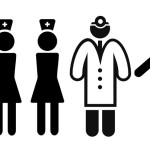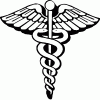Consider a Medical Assistant Job in a Patient-Centered Medical Home

While most medical assistant jobs are still located in doctor’s offices, a new type of facility is quickly gaining ground as an excellent environment not only for workers, but also for patients. It’s called a patient-centered medical home (PCMH), and it’s a method of organizing and delivering primary care that’s comprehensive, patient-centered, coordinated, accessible, safe and of high quality. To become accredited as a PCMH, a medical practice or network must ensure it follows a set of guidelines that define a medical home.
Here’s a rundown of its primary attributes:
Comprehensive
A PCMH includes a team of medical professionals responsible for providing “the large majority” of a patient’s medical needs, both physical and mental — including prevention. The team can include medical assistants along with doctors, nurses, pharmacists, nutritionists, mental health experts and more and can be either on-site or virtually connected to one another.
Patient-Centered
The care provided by a PCMH is relationship-based, catering to each patient’s specific needs — “including family, financial and other factors that may affect health” — and comfort level, keeping them and their family members fully informed of care plans and options, and being open to suggestions to improve care. Sometimes a patient’s needs can be met by a medical assistant, nurse or other healthcare worker, allowing the doctor to work on a patient with a more urgent need.
Coordinated
The PCMH team coordinates medical care for patients throughout the healthcare system, whether they’re at a hospital, a specialist’s office or they’re receiving care at home. Improved coordination and communication reduces the chances of repetitive testing being done unnecessarily, reducing cost and freeing up resources.
Accessible
With a PCMH, there is typically 24-hour access to a member of the team, either by phone or electronically, plus longer in-person hours of access than typical healthcare providers and shorter waiting times for urgent care.
Safe and High-Quality
PCMH team members seek not only to provide high-quality service but also to constantly improve that quality by measuring performance, tracking patient satisfaction, using tools to support decision-making and sharing quality and safety data and plans for improvement.
With a major goal of the PCMH movement being “keeping patients with chronic conditions healthier and out of hospitals and emergency rooms,” the role of the medical assistant (who rarely works in hospitals) could become all the greater as medical homes continue to rise in popularity.
Not only are PCMHs great experiences for patients, but studies have also found them great working environments for healthcare professionals. The sense of teamwork increases their level of confidence, and the focus on patient care grounds them by reminding them what’s important, making their job much less stressful than a conventional medical office. In fact, a 2009 American Journal of Managed Care report on one newly converted medical home found that not only were patients more satisfied under the new format, but staff burnout was down from 30% to 10%. Perhaps the most amazing finding, however, was that all of this was accomplished without an increase in the cost of care.
(Sources: Bureau of Labor Statistics, Agency for Healthcare Research and Quality, La Crosse Tribune, Consumer Reports, The American Journal of Managed Care)







